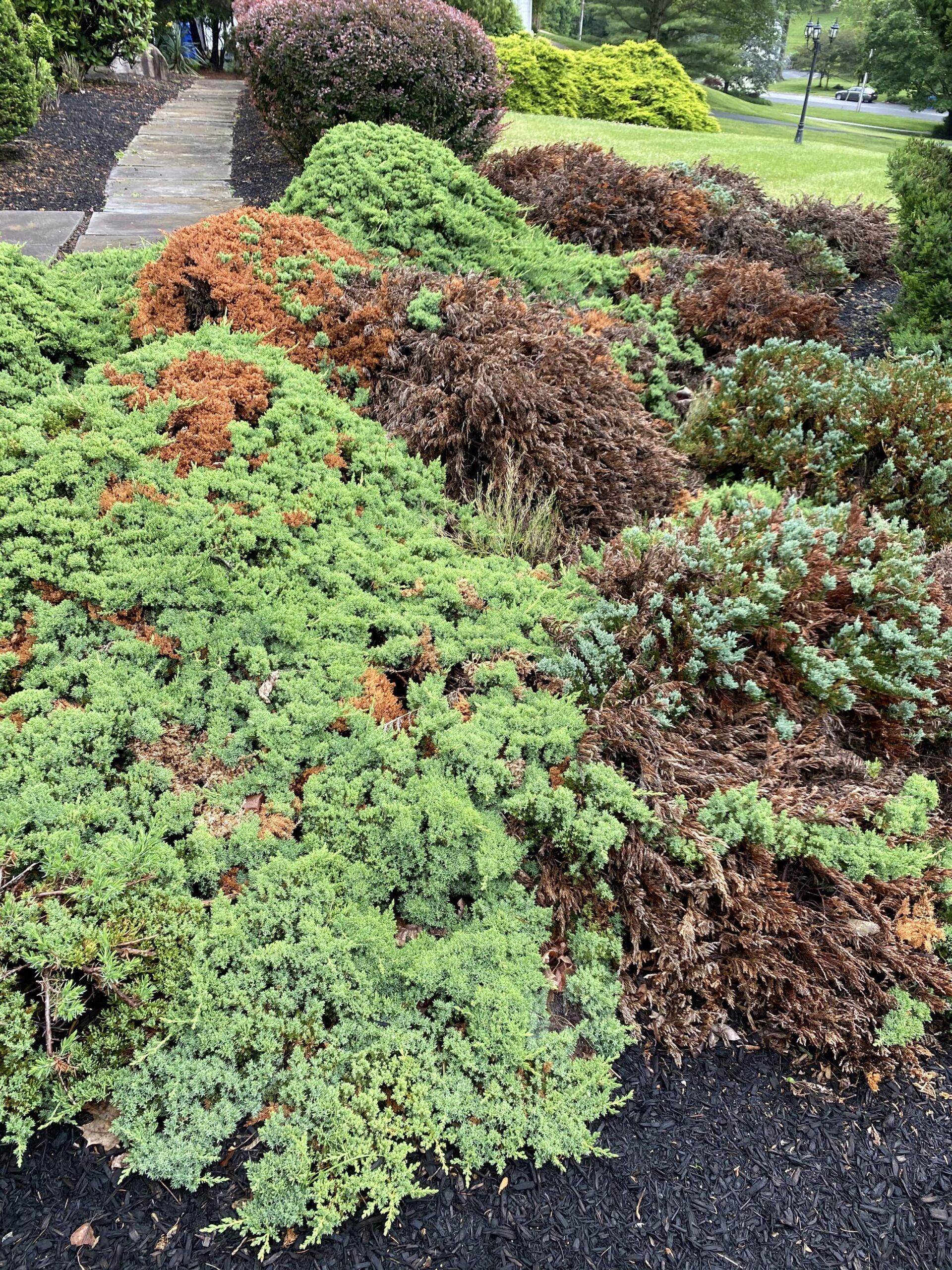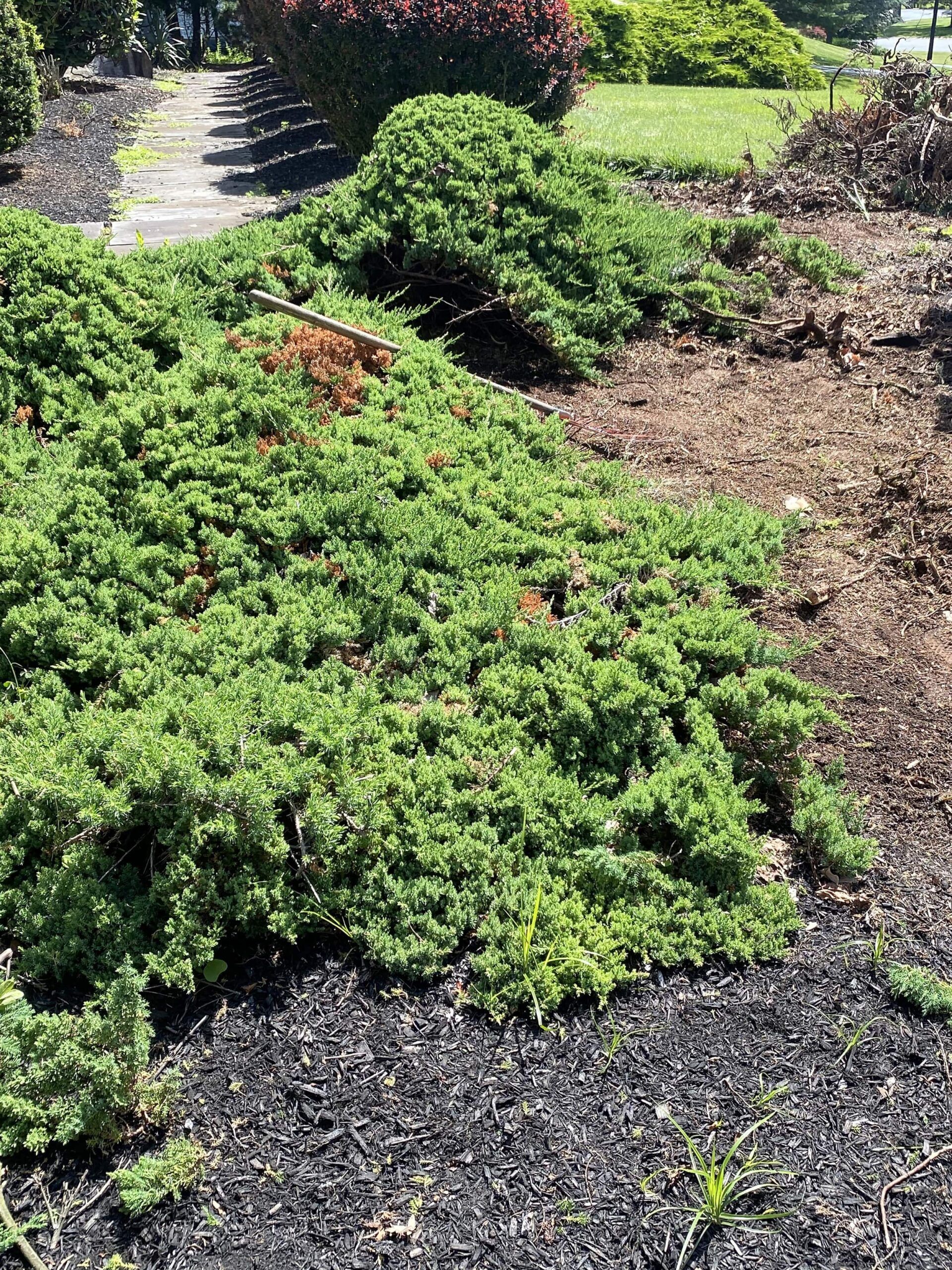Why Sanitation Pruning Is Necessary for Plant Health Care
Pruning is essential for maintaining tree health, safety, and size. Making precise cuts on specific tree branches helps a tree’s overall vigor and vitality. One form of pruning that we often perform between September and November is sanitation pruning, a critical horticultural practice aimed at disease prevention by minimizing the spread from an infected plant or tree.
Reasons for Sanitation Pruning
Sanitation pruning is a vital practice in plant health care that significantly contributes to your landscape’s overall well-being and longevity. This technique removes dead, damaged, or diseased plant material to prevent the spread of pathogens and pests while enhancing your plants’ aesthetic appeal.
In addition, sanitation pruning improves air circulation and light penetration within the plant’s canopy, encouraging new growth and flowering for a more robust landscape. Sanitation pruning is a proactive measure to maintain vibrant and resilient landscapes.
How Does Sanitation Pruning Differ from Other Pruning?
Sanitation pruning and other seasonal pruning serve different objectives in plant health care. For example, structural pruning often focuses primarily on shaping and training young trees or shrubs to promote a strong and healthy structure. Sanitation pruning prioritizes the health of the tree and landscape by preventing disease spread. This process directly addresses infected areas, limiting the spread of plant diseases to healthy branches or other nearby woody plants.

Mixed evergreen before sanitation pruning

Mixed evergreen after sanitation pruning
Why Fall is Ideal for Sanitation Pruning
Our certified arborists often perform sanitation pruning in the fall as an ideal season. As leaves fall off branches, inspecting plants to identify any signs of pests, disease, or other damage is significantly easier than when trees are fully covered in leaves.
Moreover, due to the cooler weather, pruning in the fall reduces the risk of pest infestation or diseases. Of course, some exceptions exist. For example, if branches pose an immediate safety hazard or are severely diseased, they should be removed regardless of the season. Some plants may also require pruning at different times of the year.
What is Involved in Sanitation Pruning?
Sanitation pruning involves several key steps:
Proper Tool Sterilization
Arborists and plant health care experts sterilize pruning tools between cuts to prevent the spread of diseases. Tools can harbor microorganisms that inadvertently transfer diseases from one part of the tree to another or to additional trees.
Making Clean Cuts
Proper cuts promote faster healing and reduce the risk of disease entry. The use of clean, sharp pruning shears or saws helps avoid damage to the plant tissue. Experts
make precise cuts with the pruning blades outside the branch collar (the raised ridge at the branch’s base) and avoid leaving stubs as they can become entry points for diseases.
Removing Diseased, Damaged, or Dead Branches
When removing diseased or damaged wood from a plant or tree, we cut back to healthy tissue to promote proper healing and growth. To start, a plant health care expert must accurately diagnose the specific disease or damage affecting the plant to determine the extent of the removal required. Once the affected areas have been identified, the expert or arborist makes a pruning cut several inches below the visible signs of disease or damage, removing the compromised wood. In severe cases, removing the entire branch may be necessary to prevent further disease spread and promote the plant’s overall health. When pruning is complete, proper disposal is required to avoid disease spread.
Hiring A Professional Plant Health Care Company for Sanitation Pruning
Hiring a professional plant health care company for sanitation pruning is recommended when dealing with plant and tree diseases. These experts possess the knowledge and experience to manage such diseases effectively. Their proficiency in disease management ensures that your entire landscape is protected against further infection.
Contact Burkholder PHC for Sanitation Pruning Services
Sanitation pruning plays an important role in maintaining the health and beauty of a landscape, and Burkholder PHC’s experts provide professional and meticulous sanitation pruning services. Our team has the specialized knowledge and experience to effectively manage plant and tree diseases, ensuring your landscape’s long-term health and resilience. Contact Burkholder PHC today for a free landscape assessment.

